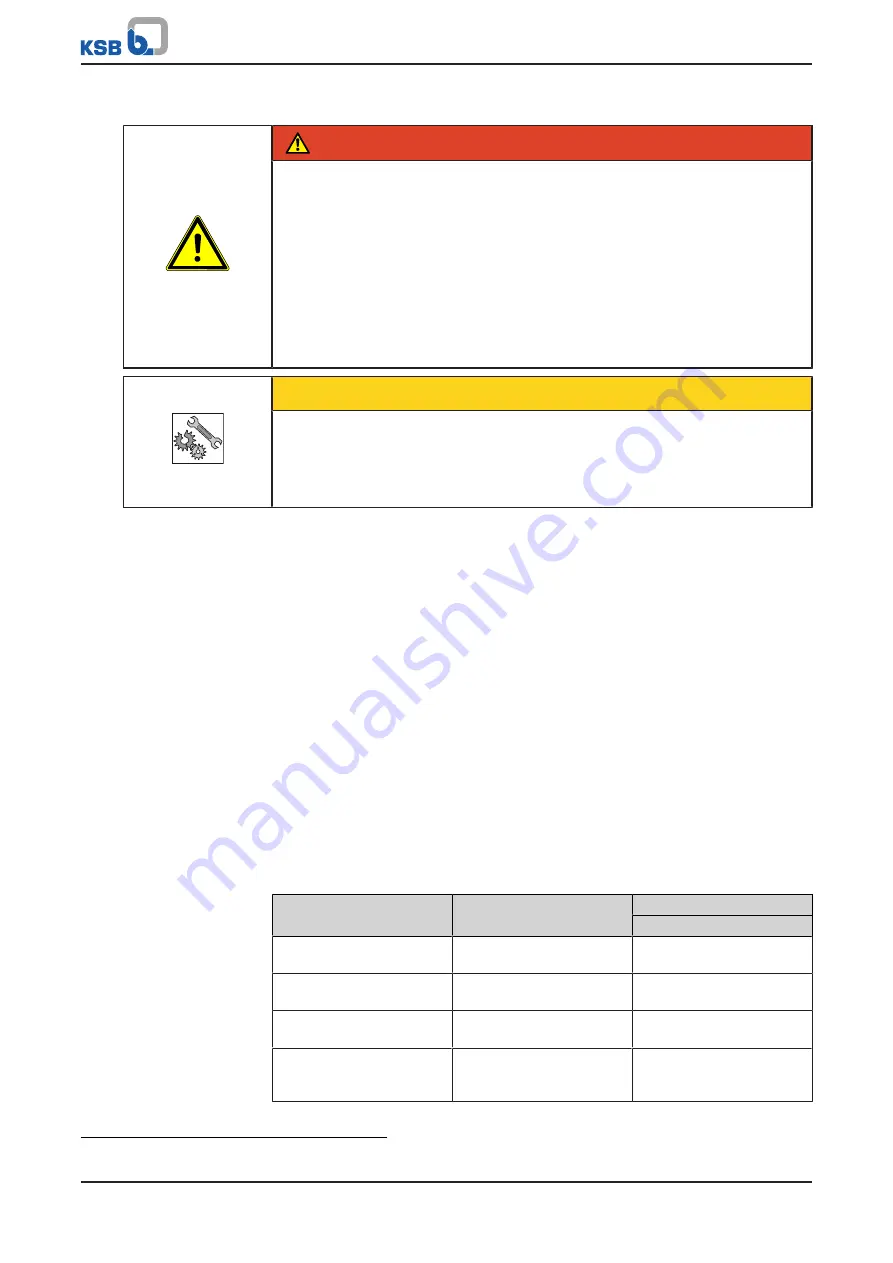
6 Commissioning/Start-up/Shutdown
17 of 30
KWT51
1974.95/01-EN
6.2.2 Selecting the quench liquid / buffer fluid
DANGER
Contact with toxic, flammable, explosive or hot quench liquid / barrier fluid
Risk of injury, e.g. chemical burns on the skin and in the eyes, poisoning and burns!
▷
Observe the relevant safety instructions, e.g. safety data sheets, for the
handling of hazardous substances (wear safety goggles, protective gloves,
protective clothing, etc. if required).
▷
Wear personal protective equipment (e.g. safety goggles, protective gloves,
protective clothing, etc).
▷
Collect and properly dispose of the quench liquid / buffer fluid.
▷
Remove any quench liquid / buffer fluid residues from the KSB quench system
and flush the system thoroughly.
CAUTION
Use of non-approved fluids
Interaction between quench liquid / buffer fluid and fluid handled!
▷
Only use the fluids listed in the order documentation.
▷
If in doubt, contact the manufacturer of the fluids.
When selecting the buffer fluid
1)
observe the following:
▪
Additives which inhibit wear and/or oxidation are often found in commercial
turbine oils and can lead to deposits on the seal faces.
▪
Use a clean buffer fluid
1)
not containing any foreign matter.
▪
The buffer fluid
1)
should have flow characteristics which prevent the formation of
deposits or residues.
▪
The buffer fluid
1)
should prevent the formation of ice and keep salts dissolved.
▪
The buffer fluid
1)
should prevent any contact between the fluid handled and
atmosphere or reduce the absorption of humidity by the fluid handled.
▪
It should be resistant to ageing.
▪
It should be stable at the applicable operating temperature and operating
pressure.
▪
Avoid fluids susceptible to evaporation, hardening and foaming.
▪
Ensure compatibility with the fluid handled. If the inboard mechanical seal fails,
the two fluids may come into contact with each other.
▪
Buffer fluid escaping to
1)
atmosphere must be acceptable.
Table 5:
Preferred buffer fluid
1)
Buffer fluid
1)
Function of the buffer
fluid
1)
Operating temperature
[°C]
Ethylene glycol
Preventing the formation
of ice
-40 to +100
Light oils (viscosity 2 – 3°E
at 50 °C)
Absorbing leakage or
lubricating the seal faces
-10 to +120
Water
Diluting salts contained in
leakage
10 to 80
Water + ethylene glycol
Diluting salts contained in
leakage and preventing the
formation of ice
-20 to 100° C (70 %/30 %)
-35 to 110° C (50 %/50 %)
1
Quench liquid / buffer fluid














































